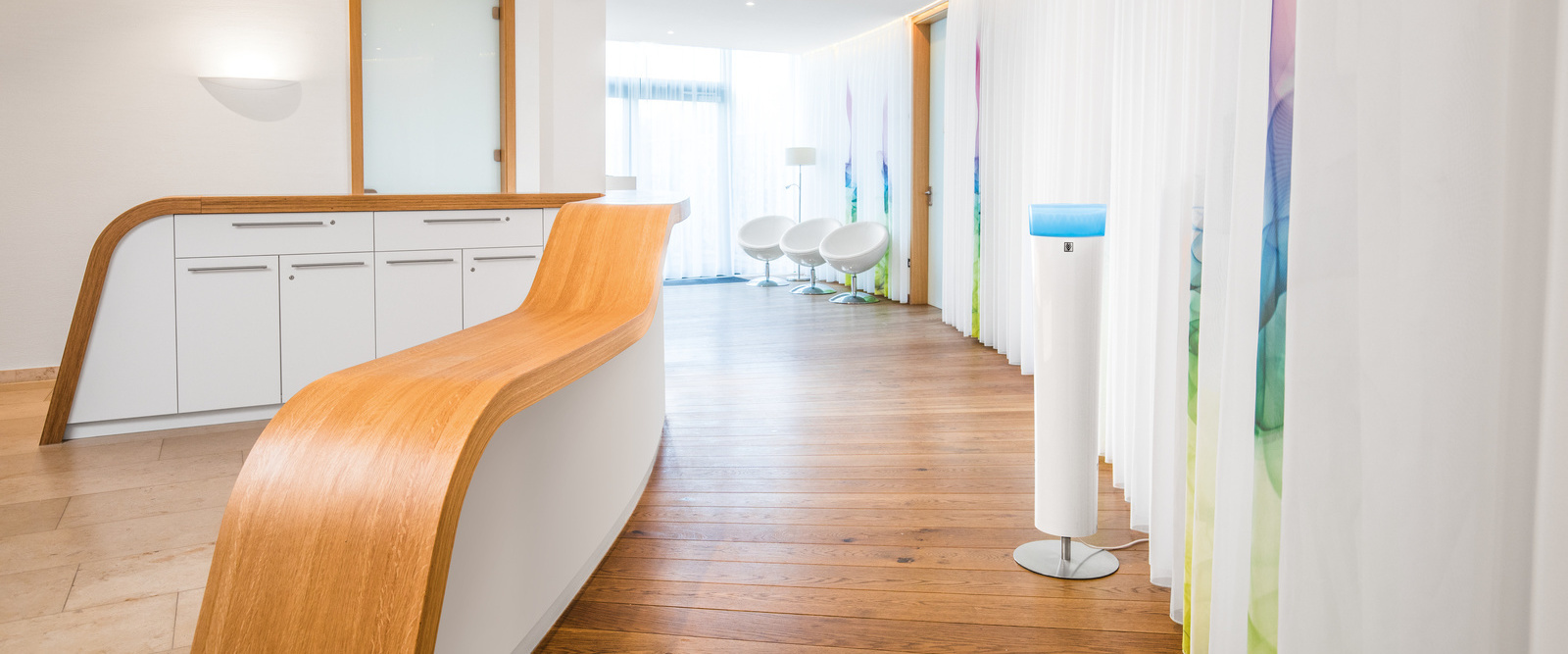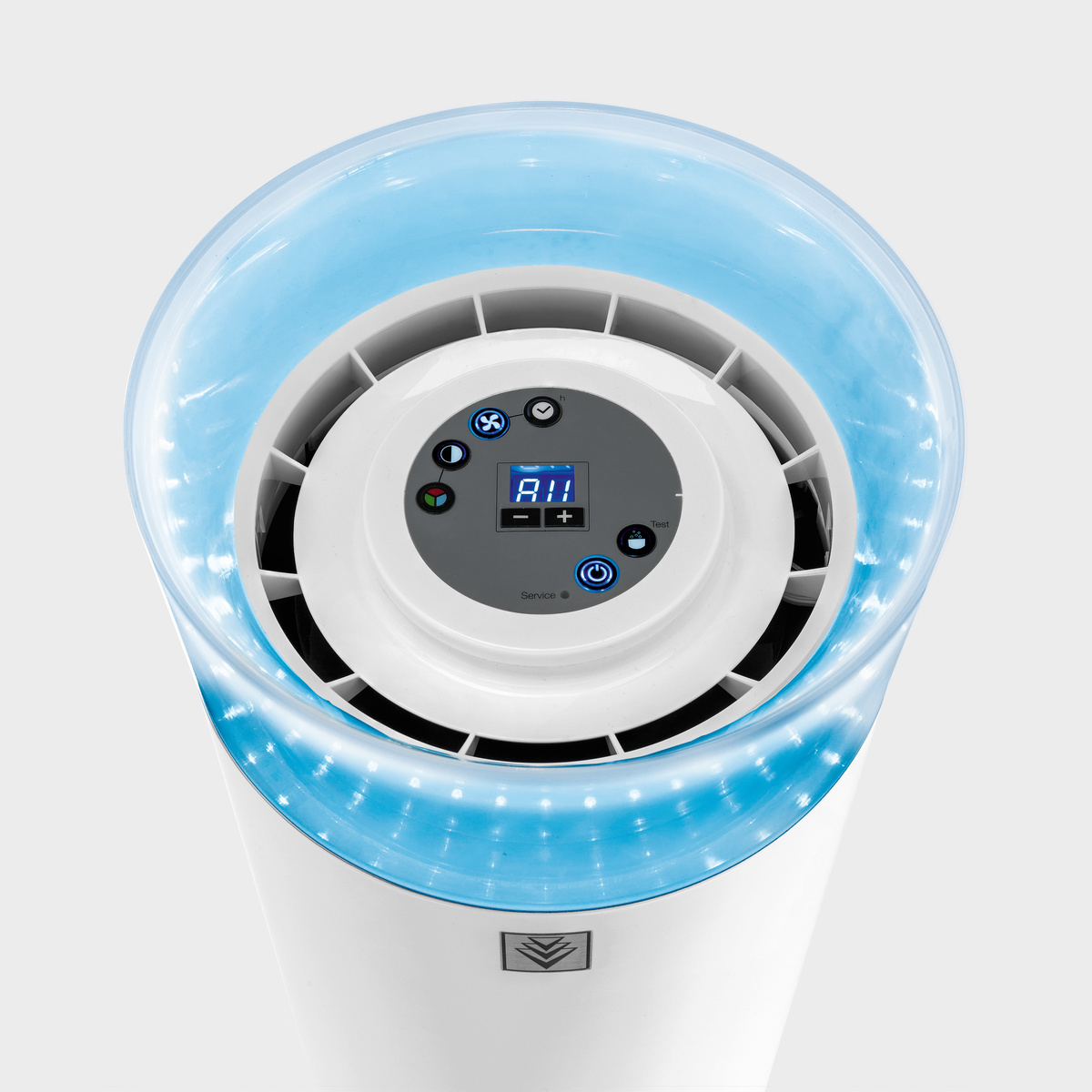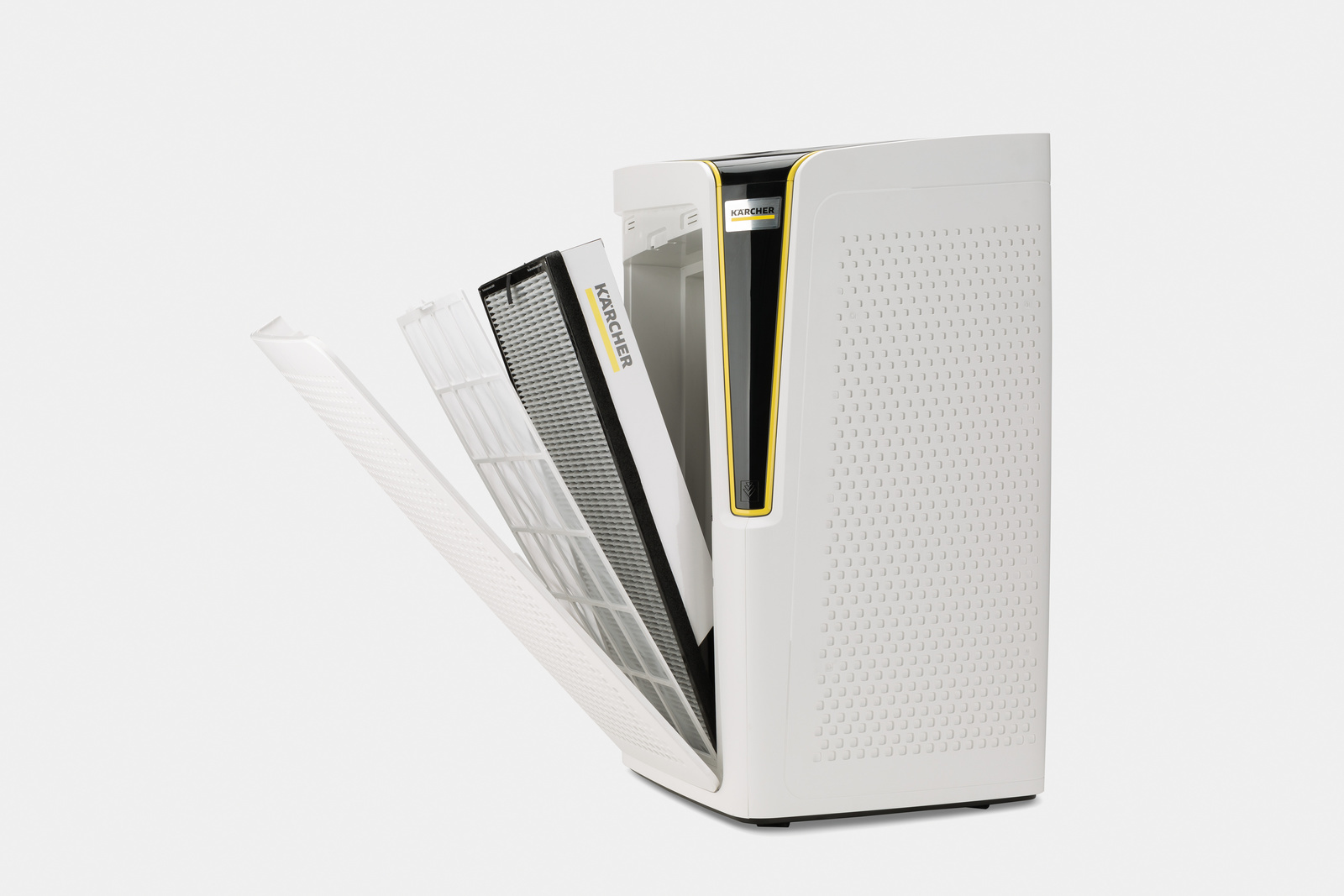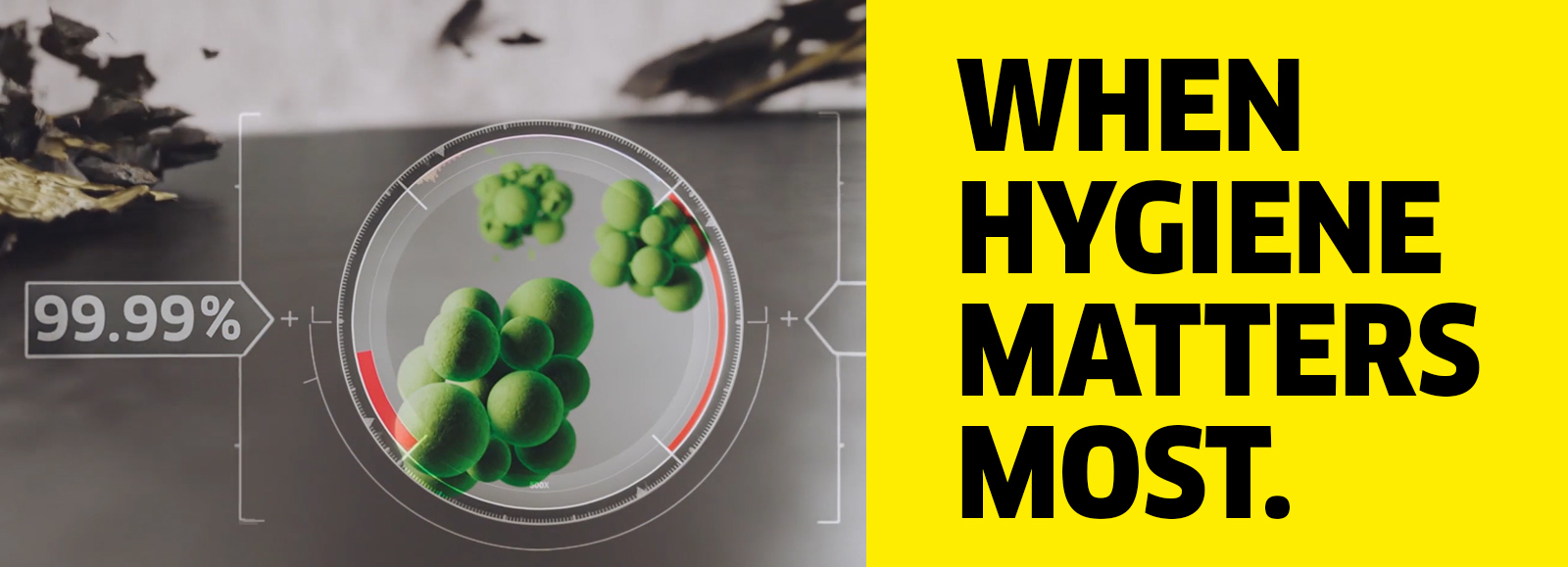Healthy, fresh, sterile air - at home, in the office, in the sales room, in restaurants and hotels
Clean and germ-free air is particularly important in the working world, for example in offices, public and medical facilities, hotels and restaurants. In practice, however, it is precisely in these places that poor air often impairs well-being and can lead to health problems. Possible consequences are reduced performance and downtime for employees. Infectious germs that are spread via the air are also among the most difficult to contain there, as the current corona pandemic confirms.


Air purifier AFG 100
In Kärcher's AFG 100 air cleaner, the air flow is guided through a plasma generated in the unit. Unlike conventional filters, the module uses the electrostatic charge of the smallest particles such as viruses, bacteria or allergens to trap them and destroy them completely without leaving any harmful residues. Together with the pre-filter for larger particles and another three-stage filter that also retains odours, the AFG 100 removes up to 99.98% of all unwanted contaminants from the air, in rooms up to 100 square meters. The air in closed rooms is thus cleaned more effectively than is possible with HEPA filter systems.
The result is pleasantly clean and healthy air that allows allergy or asthma sufferers to breathe more freely. Many complaints and problems caused by fine dust, germs and similar impurities are effectively reduced in this way.
Air purifier AF 100
The AF 100 air purifier from Kärcher also reduces the exposure of infectious germs, harmful gases and other dangerous particles. With 2 membrane filters and activated carbon, it removes even dense smog within a very short time. It cleans the air in a 100 square meters room within 20 minutes and retains up to 99.98% of all particles. Depending on the filter used - users can choose between five different specialised versions with activated carbon and HEPA technology - the device cleans the air of odours, allergenic substances such as mites and pollen, fine dust, bacteria and gaseous hydrocarbon compounds (VOC).



